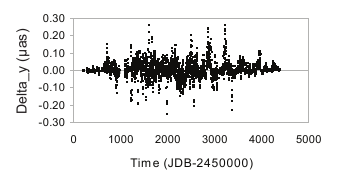Title: The Stellar Variability Noise Floor for Transiting Exoplanet Photometry with PLATO
Authors: Brett M. Morris, Monica G. Bobra, Eric Agol, Yu Jin Lee, Suzanne L. Hawley
First Author’s Institution: Astronomy Department, University of Washington, Seattle, WA
Status: Accepted for publication in MNRAS [open access on arXiv]
In the endless search for extrasolar planets, there has been one glaring challenge: stars (and the instruments that study them) are noisy objects. While telescopes like Kepler and TESS have shown us the power of the transit method for inferring exoplanet properties, these properties aren’t nearly as precise as we would like. The uncertainties associated with the transit method become especially apparent when searching for Earth-Sun analogs. Although many Earth-like exoplanets have been previously discovered, finding one that is a true Earth twin in size and composition has remained elusive due to the uncertainties present in current datasets.
The ESA PLAnetary Transits and Oscillations (PLATO) mission is a next-generation space-based mission whose primary goal is to find transiting exoplanets orbiting around dwarf stars – like the Kepler and TESS missions. PLATO claims to be able to measure exoplanet radii from transits at a precision of 3%. This degree of precision would allow astronomers to answer many unsolved questions in exoplanet science from the evolution of planets alongside their host stars to the mechanisms behind the Fulton Gap. To validate this uncertainty, the authors of today’s paper sought to determine the limit stellar variability places on the uncertainty of exoplanet radii.
To further understand the precision claimed by PLATO, today’s paper looked towards the most well-studied star in the universe: the Sun. Using images of the full Sun from the Helioseismic and Magnetic Imager (HMI) on the Solar Dynamics Observatory, the authors devised a method to efficiently simulate transits of Earth-sized planets. Their 252 simulated transit lightcurves are shown in Figure 1.

Next, the authors looked at the primary contributors to noise in their lightcurves. They first examined the noise contributions from surface granulation – the upwelling of convective cells from deeper layers of the star (see Figure 2). Although granules appear somewhat randomly, their turnover timescales are constant. This allows their contribution to the stellar lightcurve to be modeled as correlated noise. When looking at the uncertainty granulation places on their simulated planet radius measurement, the authors found that granulation contributed an uncertainty of 0.02%. This value is too small to substantially affect conclusions about planet composition.

The authors then examined the contributions of p-mode oscillations to the radius uncertainty. P-mode oscillations are caused by convective motions in a star. The authors found that p-mode oscillations produce noise that correlates with stellar granulation. These oscillations additionally produce a degeneracy with the planet’s impact parameter, or the projected distance between the star and the planet when they are closest together. This degeneracy brings the uncertainty on the planet radius up to ~3%, accounting for nearly all of PLATO’s error budget. But have no fear! The authors state that follow-up observations at infrared wavelengths where stellar variability signals are significantly weaker can improve this uncertainty. They also state that this close precision will hopefully lead to an extended mission that will further improve upon the uncertainties in planet radius measurements.
Although measuring precise exoplanet properties is a monumental task, when done carefully, missions like PLATO will substantially improve our understanding of these far-away planets and our own.



